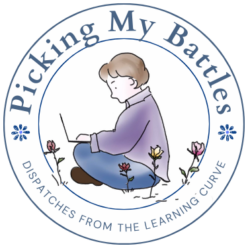 For some reason I can’t quite remember, I found an hour or two to myself on Christmas Eve of all days. Presents were wrapped, someone else was responsible for Christmas Eve dinner, the table was set, and the Sunday New York Times was sitting on the end table waiting to be read. it turned out, that that Sunday Times contained a little lump of coal in the form of an article about the advent of sensitivity readers at publishing houses. I shouldn’t be surprised that there are 1 million ways to offend potential readers or that publishers might want to keep one or two of those readers, but I was suddenly very grateful for all the classic works of literature that, having survived government censors, had the good sense to be written before sensitivity readers existed.
For some reason I can’t quite remember, I found an hour or two to myself on Christmas Eve of all days. Presents were wrapped, someone else was responsible for Christmas Eve dinner, the table was set, and the Sunday New York Times was sitting on the end table waiting to be read. it turned out, that that Sunday Times contained a little lump of coal in the form of an article about the advent of sensitivity readers at publishing houses. I shouldn’t be surprised that there are 1 million ways to offend potential readers or that publishers might want to keep one or two of those readers, but I was suddenly very grateful for all the classic works of literature that, having survived government censors, had the good sense to be written before sensitivity readers existed.
Then I thought about my own kids’ book (and future book ideas) and all the ways it might possibly offend people.
The pictures are black-and-white and red all over, so some people might get offended by the predominance of red or the fact that the starring role in the book is played by kid with really bad hair. Or some sensitivity reader might worry that I’m insinuating that mom is with bad hair can’t get their kids to clean their rooms.
But as I thought about the ending of my little book about a kid who has his own idea about the definition of a clean room, I realized the people with whom I’m really gonna be in dutch are the millions of moms who are also trying to get their kids to clean their rooms. OK, so maybe I’ll only be in dutch with the moms who still have kids under 12. And I can whittle down that number to the number of moms who read my blog who haven’t figured out the magic formula for getting their kids under the age of 12 to clean their room. So that’s like, five or ten moms at least.
I don’t want to scare you because the book does have a happy ending, if you’re the kid with the messy room, and I do want to go on record that I am not endorsing the non-cleaning of rooms. I do find myself in the controversial situation of being willing to support a flexible definition of the term “clean room“.
This last week, was winter break and, after ordering Thing2 to clean his room two days in a row before he was allowed to invite friends over for “get together’s“ (formerly known as “play-dates” which, out of sensitivity to our resident tween, has been dropped from the approved household lexicon), I realize I’ve been a bit insensitive to him on this sensitive and highly controversial subject.
Thing2, now getting better at making the room look clean (at least to the casual observer), will stuff a few things end of the bed where they were less likely to show and spend the rest of his energy putting away all the shards of paper from his last homemade light saber, organizing his props for his next special effects project, and finding a place for all the disassembled electronics he rescues from the trash.
When he’s done, the room still looks like hazardous waste site, but in all fairness, the madness is the result of a creative but methodical and investigative spirit. What looks like a shambles to me is for him a laboratory of life.
I’m a huge believer in encouraging the creative spark in everyone, especially in my offspring. That laboratory is why he comes to me at the end of the day to show me the special effects space movie he’s just made or the book he’s just “published”. So even though even a domestic anti-goddesses such as myself sometimes has to draw a line between the dirty socks on the floor to establish benchmarks for distinguishing the a laboratory from a trashcan with a bunkbed in it, the laboratory is part of what makes Thing2 grow.
It’s also why, at the end of a book about a little boy who has his own idea about how to clean room, I decided to let that idea win out.



